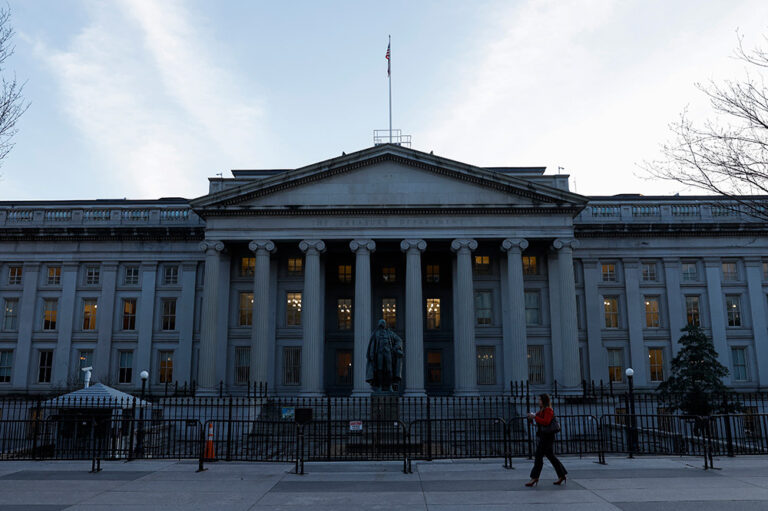The federal government is slated to borrow about $1.9 trillion in 2025, and that annual shortfall is projected to grow to $2.5 trillion by 2035. One consequence of issuing such large amounts of federal debt is that it could “crowd out” investments by the private sector, making the economy less productive and stunting wage growth.
How Does Federal Borrowing Affect Private Investment in the Economy?
To cover its budgetary shortfalls, the federal government raises money by issuing debt in the form of Treasury securities. That debt is purchased by investors such as banks, investment funds, businesses, foreign governments, and individuals because it is generally considered a safe investment. However, the cash used to purchase such debt could alternatively be used for investment in private entities. Therefore, as government borrowing increases, fewer resources are available for other investments, which can hamper economic activity.
Furthermore, increased federal borrowing puts upward pressure on interest rates. A Congressional Budget Office (CBO) study found that each percentage point increase in the debt-to-GDP ratio boosts inflation-adjusted 10-year interest rates by two basis points (.02 percentage points). The debt-to-GDP ratio is currently at 98 percent, and CBO projects that it will climb to 119 percent in the next decade, so by CBO’s measure, interest rates would be nearly half a percentage point higher than they otherwise would be due to the country’s rising debt.
Higher interest rates raise the price of borrowing, thereby deterring private investment. According to CBO’s estimation, the net result of this trade-off is that for every dollar the federal deficit increases, private investment would fall by 33 cents.
The reduction in private investment due to rising interest rates and fewer available resources can slow economic growth over time. Reduced investment in capital and workers would cause firms to be less productive and lead to lower compensation.
As the Brookings Institution notes in a recent report, “Deficits are costly to future generations to the extent they reduce national saving. A reduction in saving can reduce private investment, leaving a smaller capital stock (known as ‘crowd out’), higher interest rates, and lower GDP in the future. A reduction in national saving can also induce an influx of foreign capital; these foreign flows offset the impact of deficits on the domestic capital stock, GDP, and interest rates but increase the foreign ownership of U.S. assets. In either case, deficits mean that national wealth (and the net present value of future national income) is lower than it otherwise would be.”
Conclusion
There is a direct and critically important linkage between the country’s fiscal condition and its economic outlook through the effect on private investment and interest rates. The federal government has the ability to tax and spend equitably, promoting growth across the economy and investing in national priorities. But it also must take care to do it effectively and responsibly, making sure not to restrain investment, which would hinder opportunity and prosperity for future generations.
Further Reading
The Fed Reduced the Short-Term Rate Again, but Interest Costs Remain High
High interest rates on U.S. Treasury securities increase the federal government’s borrowing costs.
What Types of Securities Does the Treasury Issue?
Learn about the different types of Treasury securities issued to the public as well as trends in interest rates and maturity terms.
Quarterly Treasury Refunding Statement: Borrowing Up Year Over Year
Key highlights from the most recent Quarterly Refunding include an increase in anticipated borrowing of $158 billion compared to the same period in the previous year.


